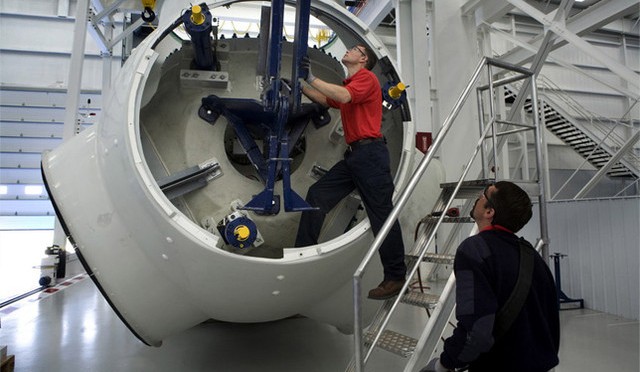Unemployment is plaguing Europe, and just this week Anni Podimata, Vice President of the European Parliament told delegates attending EWEA’s 2013 Annual Event in Vienna that youth unemployment has reached “unprecedented levels.”
But despite the jobs crisis, one sector – wind power – said yesterday that it still needs to hire more than 5,000 workers per year in order to fill a considerable skills shortage in the industry.
“By 2030 there could be a skills gap of 15,000 workers if current hiring levels continue,” Andrew Garrard, Chairman of renewable energy consultancy GL Garrard Hassan, told journalists attending a press conference in Vienna. “We are going to 400 GW [of wind power capacity] by 2030 – and that takes a lot of people,” Henning Kruse from Siemens and Chairman of TPWind, added.
The figures come from a survey to be published by the EU’s Wind Energy Technology Platform (TPWind) and carried out by GL Garrad Hassan, in which 75% of respondents said they found it difficult to recruit. The vast majority of recruitment difficulties are in Operations and Maintenance and some 10,000 out of the 15,000 jobs missing by 2030 will be in O&M. However, Kruse said that the skills gap covers all parts of wind.
EWEA’s own statistics reiterate wind energy’s high employment opportunities revealing that wind energy jobs grew by 30% from 2007-2010 at a time when overall EU unemployment levels rose by nearly 10%.
Lizhen Xu, from renewable energy recruitment agency Greenfish, said that there is a growing interest in green jobs. “The sector needs experienced project managers, especially in offshore wind and cables, but it also needs sales and account managers and environment managers,” she said.
Garrard called for a greater participation in wind energy courses at university level, although the availability of courses in recent years has risen, he said. However, there are inadequate levels of vocational training, Garrard noted. “We should get students to recognise the huge potential of wind,” he said, adding that the sector also needs to “bring in people from other industries and upscale the people who are already there.”
Other recommendations to be included in the full TP Wind report set to be released in the summer include: boosting science, technology, engineering and maths skills in vocational training, increasing industry input into academic courses, raising the number of graduates of wind energy generalist courses, harmonising vocational training and training across the EU, and boosting the emphasis on training in operations and maintenance. Find out more here.
As EWEA’s 2013 Annual Event enters its final day, blog followers can expect to read a full round-up of the event this week.
By Zoë Casey, http://www.ewea.org/blog

